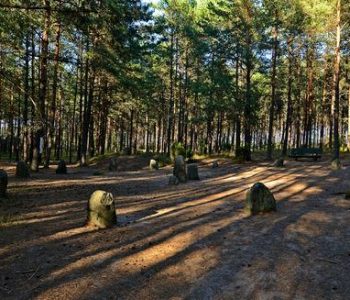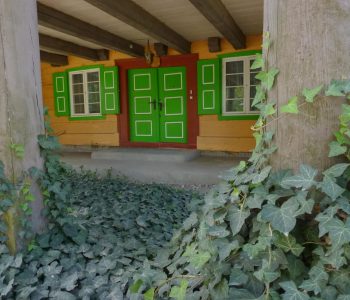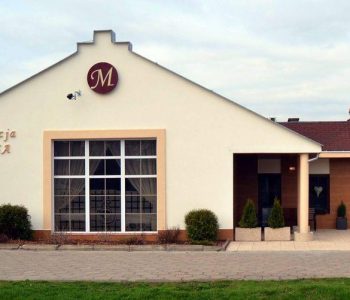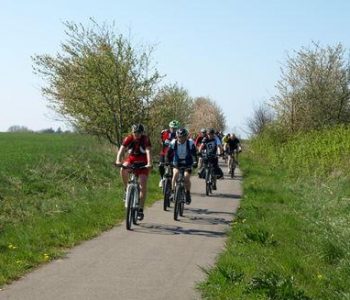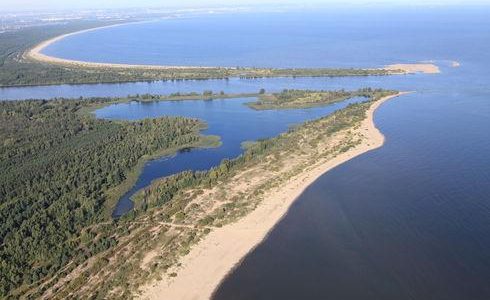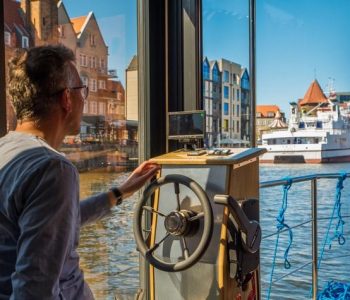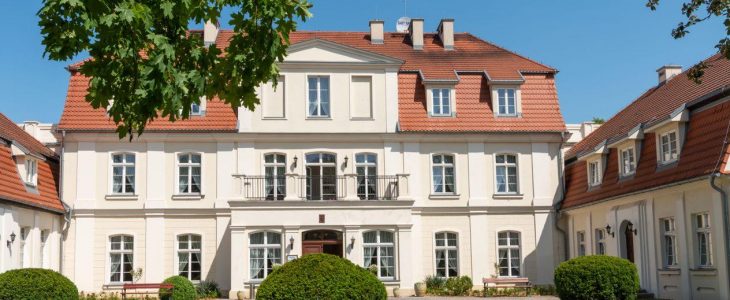
Bory Tucholskie National Park, fot. Daniel Frymark
One of the most popular trails in this area is marked red Kashubian Trail of Julian Rydzykowski, that starts in Chojnice and is 59 kilometres long. A part of the trail that is within administration borders of Park Narodowy Bory Tucholskie is around 10 kilometres long, and starts in Bachorze by Charzykowskie lake. The name of this settlement comes from the word “bachorze,” that means swamp, marsh. We will find here a copy of a wooden crucifix, set here in 1812 by Polish legionnaires that headed over to Moscow with the Napoleon army. We will then go to the forest where we will follow a sandy road. We will pass sites of rare plants – a groundcedar and a twinflower (a relic from glacial era). Then we will pass a dystrophic Kacze Oko lake, reaching a place called Stara Piła (Piła Młyn). Once there was a little settlement here, and a water mill, however the most interesting is around 600-years-old, overgrown with thick moss, pedunculate oak called “Bartuś,” the most famous and the oldest monumental tree of the Park that is 25 metres high. The next stop on the trail is Płęsno lake, by which with a stroke of luck we can meet living here otters or nesting kingfishers. Further we will hike along Struga Siedmiu Jezior [Seven Lakes Stream], passing lakes Główka, Bełczak and Jeleń. By the last one, there is a wooden bridge and a place to rest. Along the way we may look for the traces of local beavers’ activity. Going to the east along the shorelines, we will reach the border of the Park Narodowy “Bory Tucholskie” – the further part of the trail leads beyond its terrain, leading us through a range of Kashubian villages of rich cultural and historical traditions. The final stage of the long hike is Wiele village and an area of Kalwaria Wielewska located on the hillside of Biała Góra, that has 23 objects (including 14 chapels).
Park Narodowy Bory Tucholskie is crossed also by a 162-kilometre long blue trail of Brda. It runs together with Brda river through two voivodeships, and it has its start in Bydgoszcz (Kujawsko-Pomorskie Voivodeship) and leads to Konarzyny village (Pomorskie Voivodeship). Following this trail we will enter the Park’s terrain in Męcikał village. Brda will take us to two lakes – Kosobudno and Dybrzk, around which we will see impressive in size spruces that are nature monuments. Following the route we will reach Drzewicz settlement in order to then, while passing lakes Łąckie and Witoczno, reach the popular among tourists Swornegacie village, that is known for its characteristic name. It is a combination of two Kashubian words – “swora” is a plait braided from spruce’s roots, once used to strengthening – “gacenie” – the rivers’ banks. In the village, it is worth to visit a Neo-Baroque and modernistic parish church of Saint Barbara, as well as Kaszubski Dom Rękodzięła Ludowego [Kashubian House of Folk Handicraft]. Our further steps will be directed to the south, going along the eastern shore of Karsińskie lake. In the area of Owink settlement we will enter a forest, to reach Płęsno lake. We will leave the Park in Małe Swornegacie village, picturesquely located on the border of three lakes – Charzykowskie, Karsińskie and Długie.
Another trail of an above-regional rank, that covers the area of Park Narodowy Bory Tucholskie, is a green Struga Siedmiu Jezior Trail. The length of it amounts to 48 kilometres, and 22 of them we will cover on the terrain of the Park. The start of the trail is Charzykowy, a village that is a cradle of Polish inland sailing. Here, during annexation, there was created an unregistered Stowarzyszenie Przyjaciół Żeglarstwa [literally: Sailing Enthusiasts’ Association], of which traditions are cultivated to this day. We will enter the Park’s terrain in the area of Niedźwiedzie lake. Going north we will reach Wzgórze Siedmiu Dróg [literally: Seven Roads Hill], also called Hubertówka. There is a Saint Hubert monument here from 1931, with a relief in the shape of a seven-pointed star that shows the history of the Saint, who allegedly saw a deer with a crucifix between its antlers. Then, still going north, we will pass Wielkie Gacno Lobelian lake, to reach on a forest sandy road an inland dune, and right next a Bachorze settlement. In this moment, our route meets with the red Kashubian Trail. After seeing Bartuś oak by Stara Piła, we will turn to the route along the lakes belonging to Struga Siedmiu Jezior – Płęsno, Główka, Bełczak, Jeleń. In the area of Zielone lake, we can try to find a nature monument – a site of a rare plant, a twinflower. Our next steps will be directed towards the south, where our next aim will be Ostrowite lake – the biggest (280 hectares) and the deepest (43 metres) among the Park’s reservoirs. In the shore area there appear rarely seen plant congeries like those of swamp sawgrass and reed association. We can meet also here water birds, among others, cranes, great cormorants, great crested grebes, sawbills, grey herons and butterbumps. The final stage of the Park part of the trail leads from Ostrowite on a sandy forest road to Klosnowo village.
On the terrain of the Park Narodowy Bory Tucholskie there are also two linking trails – a black one (4.7 kilometres) starts in Drzewicz, from where we will go through the alley of birches, passing Nierybno Lobelian lake, and we will reach a place of a former peat harvesting site, a so called “pętla Lipnickiego” [“Lipnicki Loop”]. The trail ends in a place where it crosses with a green “Struga Siedmiu Jezior” trail and a red Kashubian Rydzykowski trail.
The yellow trail (1.5 kilometres) links the blue trail with the red and green ones, stretching from Dybrzk lake to Jeleń lake.

